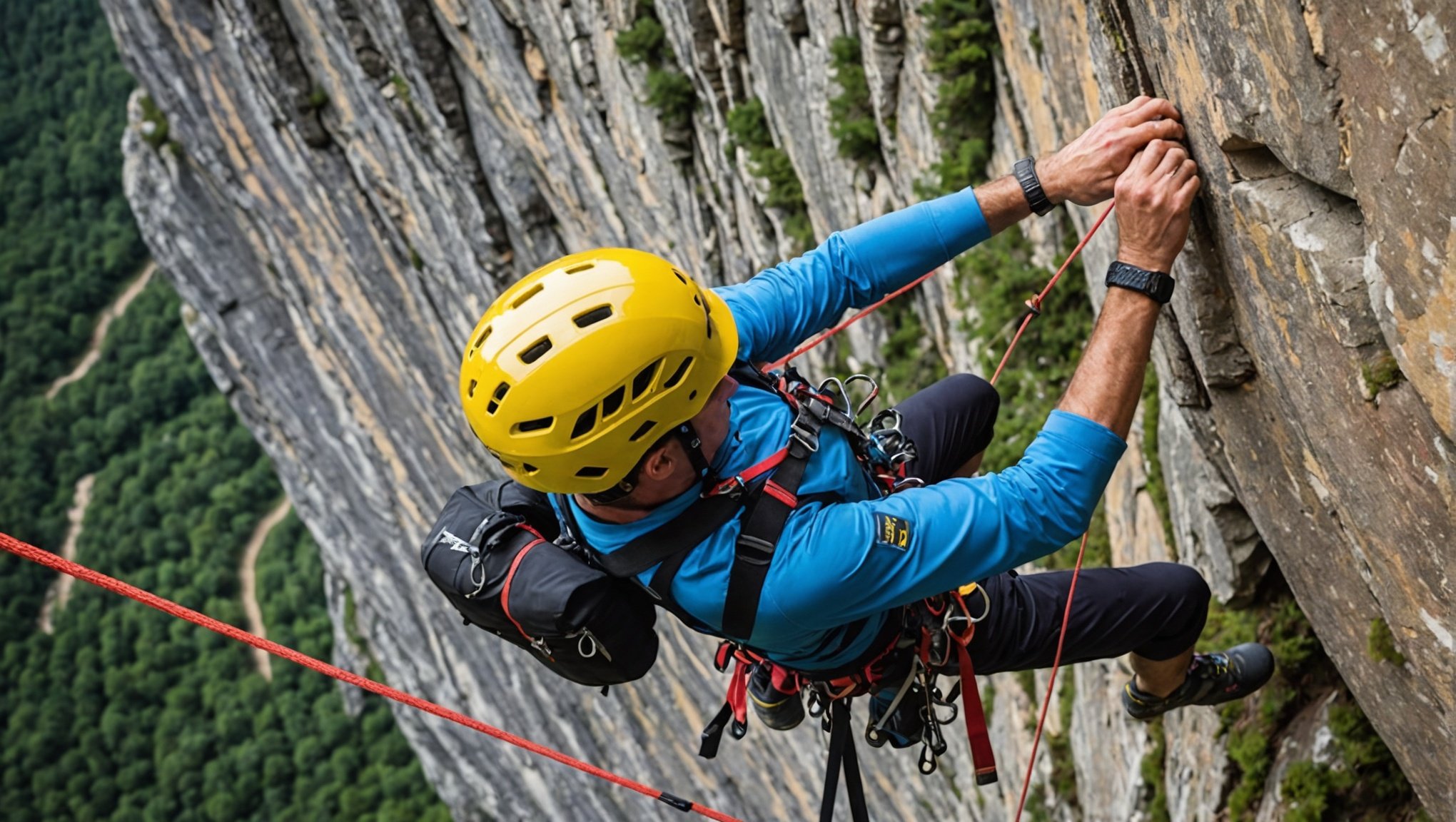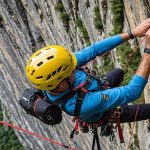Mastering Risk Management: A Guide for UK Sport Climbing Instructors to Safely Educate Climbers
Understanding the Importance of Risk Management in Sport Climbing
Risk management is a crucial aspect of sport climbing, whether you are an instructor teaching in an indoor climbing gym or leading a group on an outdoor adventure. The inherent risks associated with climbing, such as falls, equipment failure, and environmental hazards, make it imperative for instructors to be well-versed in effective risk management strategies.
“As a Rock Climbing Development Instructor, you will be acutely aware of the risks posed by lead climbing and be able to manage them,” emphasizes the Rock Climbing Development Instructor candidate handbook[1].
Also to discover : Enhancing Match Decisions: The Role of Video Replay for UK Fencing Coaches
To start, it’s essential to understand the types of risks involved in sport climbing. Here are some key areas to focus on:
- Falls and Injuries: The most immediate risk in climbing is the potential for falls, which can result in injuries ranging from minor scrapes to severe trauma.
- Equipment Failure: Climbing equipment, if not properly maintained or used, can fail, leading to serious consequences.
- Environmental Hazards: Weather conditions, rock instability, and other environmental factors can pose significant risks.
- Human Error: Mistakes made by climbers or instructors, such as incorrect belaying or improper use of equipment, can be catastrophic.
Assessing and Mitigating Risks
Effective risk management begins with a thorough assessment of the climbing environment and the skills of the climbers. Here are some steps to follow:
Also read : Boosting Reaction Times for UK Hockey Goalies: Effective Specialized Drills to Enhance Performance
Risk Assessment
Before any climbing activity, conduct a comprehensive risk assessment. This involves:
- Environmental Check: Evaluate the weather, rock conditions, and any other environmental factors that could impact the climb.
- Equipment Check: Ensure all equipment is in good condition and properly used.
- Climber Assessment: Evaluate the skills and experience of the climbers to ensure they are suitable for the climb.
Mitigation Strategies
Once risks have been identified, implement strategies to mitigate them. Here are some key strategies:
- Proper Equipment Use: Ensure that all climbers understand and use equipment correctly. This includes proper belaying techniques and the use of safety gear.
- Supervision: Maintain adequate supervision at all times. For beginners, this may involve one-on-one supervision, while more experienced climbers may require less direct oversight.
- Safety Briefings: Conduct thorough safety briefings before each climb to ensure all participants are aware of the risks and how to manage them.
Safe Teaching Methods for Climbing Instructors
Instructors play a critical role in teaching safe climbing practices. Here are some safe teaching methods to adopt:
Step-by-Step Instruction
Break down complex skills into simpler, manageable steps. For example, when teaching lead climbing, start with the basics of belaying and gradually move on to more advanced techniques.
Demonstration and Practice
Demonstrate each skill clearly and then allow climbers to practice under supervision. This hands-on approach helps reinforce learning and builds confidence.
Feedback and Correction
Provide constructive feedback and correct any mistakes immediately. This helps prevent bad habits from forming and ensures climbers learn safe practices from the start.
Training and Certification for Climbing Instructors
To ensure instructors are equipped to manage risks effectively, they must undergo comprehensive training and certification programs.
Certification Programs
Programs like the Rock Climbing Development Instructor certification are designed to equip instructors with the necessary skills and knowledge to manage risks in climbing. These programs cover a wide range of topics, including:
- Belaying Techniques: Proper belaying is crucial for safety in climbing. Instructors must be proficient in various belaying techniques.
- Risk Management: Instructors learn how to assess and mitigate risks in different climbing environments.
- Emergency Procedures: Knowing how to respond to emergencies, such as falls or equipment failures, is essential.
Here is a comparison of some key training programs available for climbing instructors:
| Program | Duration | Cost | Location | Focus |
|---|---|---|---|---|
| Rock Climbing Instructor Training | 3 days | £250.00 | Leading Edge: Snowdonia | Comprehensive training in climbing instruction, including risk management and belaying techniques[4] |
| Rock Skills Learn to Lead Trad | 2 days | £220.00 | Basecamp, Llanberis | Focuses on traditional lead climbing skills and risk management[4] |
| Rock Skills Learn to Lead Sport | 2 days | £215.00 | Basecamp, Llanberis | Focuses on sport lead climbing skills and risk management[4] |
Resources for Climbing Instructors
Instructors need access to a variety of resources to ensure they can teach safely and effectively. Here are some key resources:
Documentation and Guides
- Candidate Handbooks: Detailed handbooks like the Rock Climbing Development Instructor candidate handbook provide comprehensive guidance on risk management and teaching methods[1].
- Online Resources: Websites and forums dedicated to climbing instruction offer valuable tips, best practices, and updates on safety protocols.
Training Events and Workshops
Regular training events and workshops help instructors stay updated on the latest techniques and safety protocols. For example:
- Rescue 3 Safe Working at Height and Co Worker Rescue at Height: A workshop focused on rescue techniques and safety at height[4].
Community and Networking
Joining climbing communities and networking with other instructors can provide valuable insights and shared best practices. Social media platforms and specialized forums are excellent tools for this.
Creating a Safe Learning Environment
A safe learning environment is crucial for effective teaching and risk management. Here are some tips to create such an environment:
Indoor Climbing Gyms
Indoor climbing gyms offer a controlled environment where risks can be more easily managed. Here are some tips for indoor gyms:
- Regular Equipment Checks: Ensure all equipment is regularly inspected and maintained.
- Clear Safety Protocols: Establish clear safety protocols and ensure all climbers are aware of them.
- Supervision: Maintain adequate supervision, especially for beginners.
Outdoor Climbing
Outdoor climbing presents unique challenges due to environmental factors. Here are some tips:
- Weather Monitoring: Keep a close eye on weather conditions and be prepared to cancel or postpone climbs if necessary.
- Environmental Assessment: Conduct thorough assessments of the climbing area to identify potential hazards such as loose rock or unstable terrain.
- Emergency Planning: Have a clear plan in place for emergencies, including knowing the nearest medical facilities and having a means of communication.
Practical Insights and Actionable Advice
Here are some practical insights and actionable advice for climbing instructors:
Start Small
For new instructors, it’s important to start with small groups and gradually increase the size as confidence and experience grow.
Use Technology
Utilize technology to enhance safety and learning. For example, apps can provide real-time weather updates and safety guides.
Continuous Learning
Instructors should commit to continuous learning, attending workshops and staying updated on the latest safety protocols and teaching methods.
Mastering risk management is essential for UK sport climbing instructors to ensure the safety and well-being of their climbers. By understanding the risks involved, assessing and mitigating them, adopting safe teaching methods, and utilizing the right resources, instructors can create a safe and effective learning environment.
As one experienced instructor noted, “Risk management is not just about following rules; it’s about creating a culture of safety where every climber feels secure and supported.”
By following the guidelines and tips outlined in this article, instructors can help their climbers enjoy the adventure of sport climbing while minimizing the risks involved. Whether in the controlled environment of an indoor climbing gym or the challenging terrain of outdoor climbing, safety should always be the top priority.











